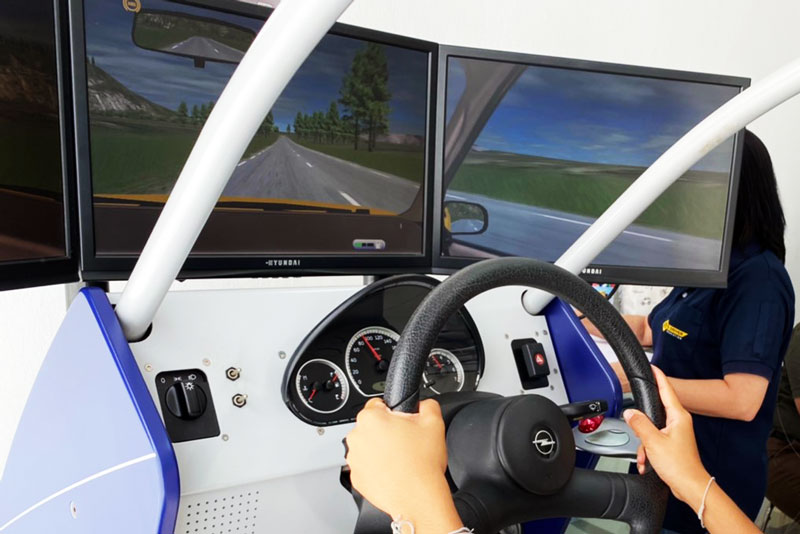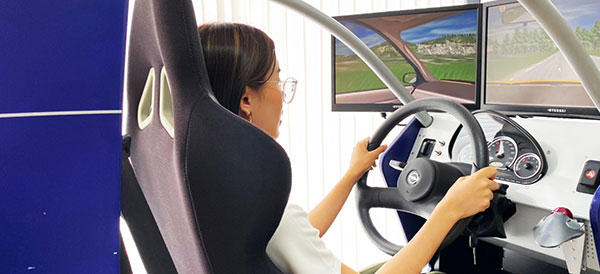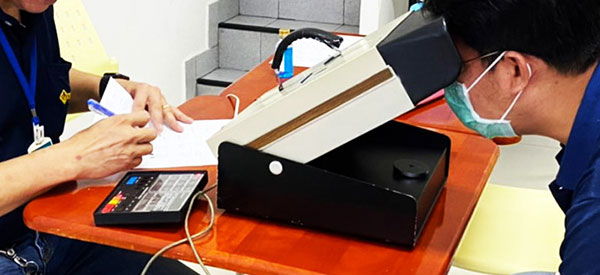
VECHICLE SIMULATOR
What is a simulator?
A simulator is a computerized device that allows us to place a student in a situation that resembles real driving. The student manipulates controls that are the same as those of a real car. He sees on a monitor an environment comparable to what he would see behind the wheel of a real car. With the development of the computer-generated image it is now possible to recreate a complete environment (road, signs, control indicators, vehicles, and other interactive elements). The computer recreates an entirely virtual landscape within which the student can move with complete freedom.

But, our simulator is more than that. It includes specific lessons on how the car works and training for the best driving strategies. It is a step-by-step educational approach that permits the student to experiment with driving techniques in a stress-free and risk-free situation. Furthermore, it tests the student’s understanding of what he has learned.
What can a simulator do?
- It can decrease the student’s anxiety; the training is better than in a real environment, which can sometimes be very stressful.
- It can help students visualize things that they cannot see in a real vehicle (operation of the clutch, brakes or power steering system).
- Because the driving environment is entirely controlled, it is possible to concentrate on one teaching objective at a time. It is possible to follow a progression established in advance and to evaluate the student in a methodical way.
- It is possible to put the student in dangerous situations that we do not want him to face in reality or situations that do not occur frequently during driving.
- We can train students in night driving without actually being on the road at night.
- We can increase or decrease traffic density according to the level of experience of the student.
- While simulation cannot and should not be used to completely replace driving in a real car, the hours spent on the simulator can reduce the number of hours the student needs to spend in a real car.
- It saves time and expense for petroleum, oil, vehicle maintenance and insurance.
- Using a simulator reduces the risk to both the instructor and the student, and avoids of the risk of accidents with other drivers.
- For certain unpleasant aspects of teaching, like training in controls and acquisition of certain reflexes, the simulator permits the instructor to spend more time on behavioral aspects, attitude and responsibility with respect to other drivers.
- The simulator can measure precisely the driver’s reaction time.




